Program Goals and Objectives
Each year we select up to twelve interns: seven categorical residents and up to five preliminary residents. Categorical positions are six to seven years in length, a period that includes five years of clinical training and one or more years of research or other advanced training. Most residents complete a master’s degree during that time and opportunities exist for residents to obtain an MPH, MBA, or PhD. Seven chief residents in general surgery graduate each year.
The residency provides progressive responsibility in preoperative and postoperative care, nonoperative management of surgical patients, development of operative skills and the ability to assume independent responsibility for clinical decision-making.
The residency provides progressive responsibility in preoperative and postoperative care, nonoperative management of surgical patients, development of operative skills and the ability to assume independent responsibility for clinical decision-making.
Post-Graduate Year 1
First-year residents participate actively in patient care in and out of the operating room. First-year residents will develop expertise in patient management, acquire basic operative skills, learn to set priorities in management and develop problem-solving, leadership and teaching skills.
Post-Graduate Year 2
Second-year residents become familiar with important surgical specialties, develop expertise in the evaluation of trauma patients and develop expertise in surgical critical care and burns. Procedural exposure is excellent during the second year.
Post-Graduate Years 3-5
The goal of the third year is to further develop surgical skills. The resident serves as an intermediate resident on the surgical services, and conducts consultations, decision-making and a greater number of major procedures. During the fourth and fifth years, the resident is the most senior on each service. In addition to further developing surgical expertise, the goal of these years is to develop management and leadership skills. During the fourth year, residents are supervised by faculty and advanced special residents (fellows); during the fifth year, residents act as service chiefs.
Rotations
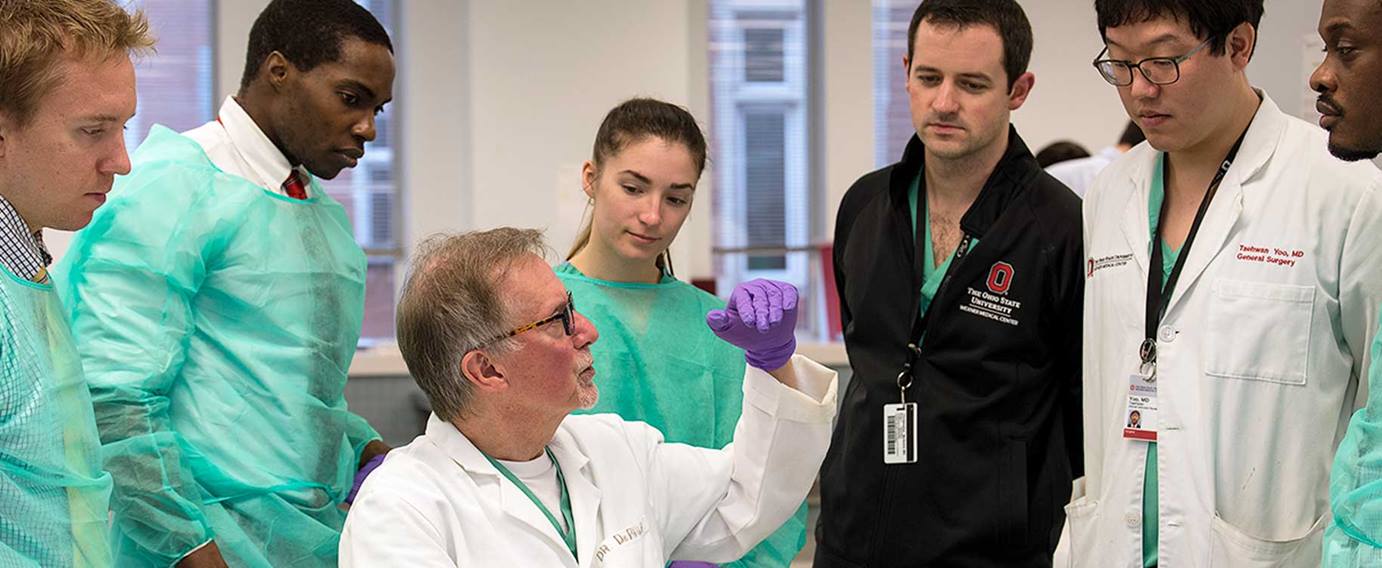
Rotations at the Wexner Medical Center make the most of the wealth of knowledge and expertise within the Ohio State and Columbus medical communities.
Our rotation locations expose residents to the highest quality medical care the region has to offer, providing the opportunity to learn first-hand surgical best-practices and patient care. View rotations for each year.
Global Surgery
Global surgery electives occur during the PGY4 year. We currently have an active site in Sydney, Australia and we’re exploring the addition of a site in West Africa. Other electives can be conducted at Ohio State facilities in accordance with resident specialty interests.
Learn more about the Global Surgery Program
Training Sites
Nationwide Children’s Hospital (NCH), James Cancer Hospital (JCH), Ohio State Outpatient Surgery (OCNA), Ross Heart Hospital (RHH), East Hospital and The Ohio State University Wexner Medical Center (OSUWMC) are all located in Columbus, Ohio. The James, Ross and Wexner Medical Center are all part of one complex on OSU’s main campus.
Operative Experience
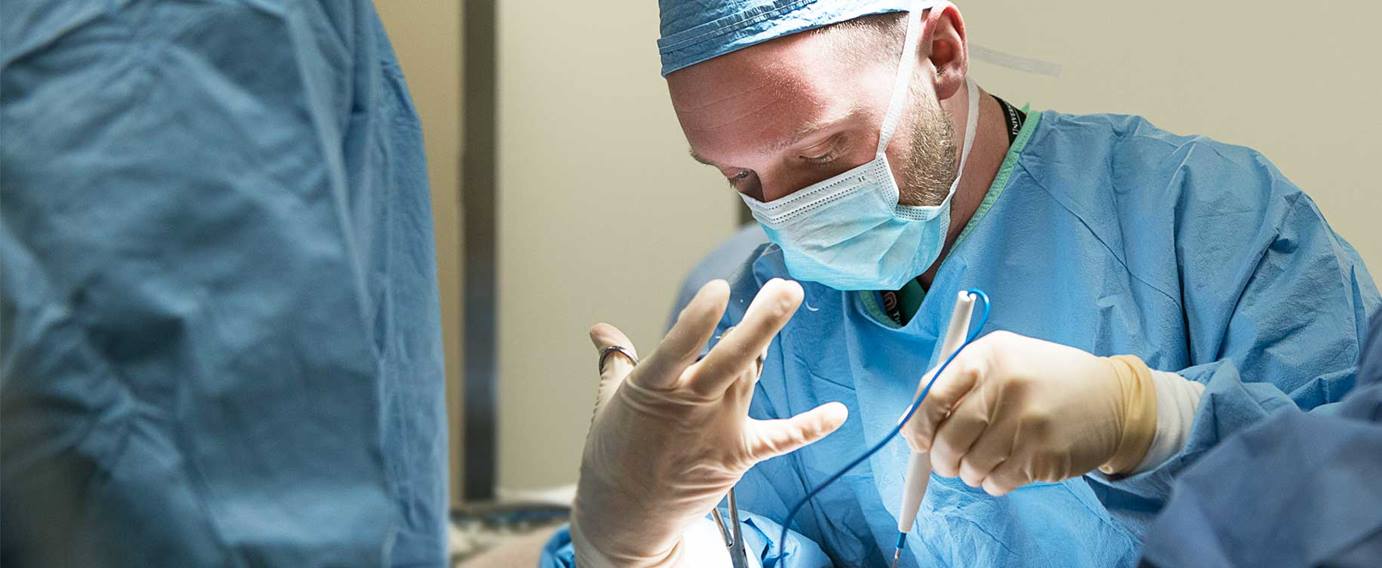
Residents generally graduate the program with 1-1.2k major case counts.
Our program has excellent volumes in all specialties and exceptional experience in hepatobiliary surgical oncology, colorectal, MIS and endoscopy. All residents are trained and certified in robotic surgery with upwards of 40-50 cases by the end of chief year.
Surgical Skills and Simulation
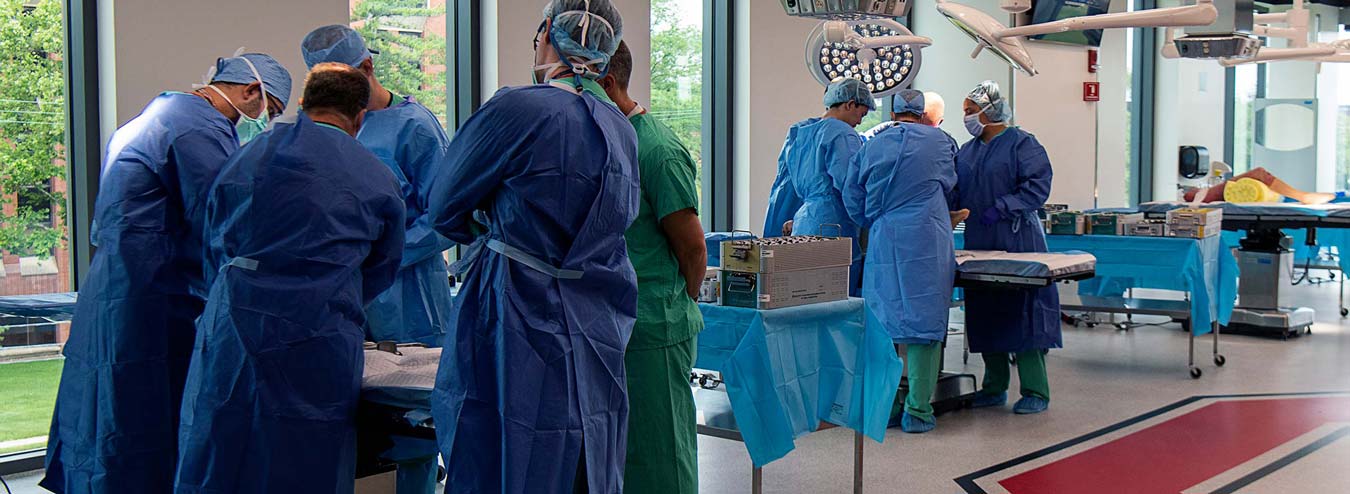
Ohio State utilizes a variety of methods to prepare residents for surgical practice. Simulation incorporated into our curriculum establishes a strong foundation of knowledge to be applied in procedures prior to entering the operating room.
Surgical Skills Training and Simulation
Skills training is an integral part of surgical education in general surgery at the Ohio State University. Our residents participate in weekly activities during protected education time, which are designed to help them establish a strong foundation in general and advanced surgical procedures. Our curriculum provides activities tailored by PGY level and are geared to help the training surgeon develop translatable knowledge and skills into the operating room.
The graduating resident in General Surgery at Ohio State will be competent in principles of surgical energy usage, dissection, and suturing, as well as endoscopy, open, laparoscopic, and robotic surgical technique. We employ a variety of training models including virtual reality simulation, porcine and human body donors. Ohio State is one of the few training programs in the nation to use soft-preserved human body donors as the primary training model that allows for a more realistic tissue appearance, compliance, and flexibility compared to traditional formaldehyde-preserved cadavers.
Fundamentals of Laparoscopic Surgery (FLS) and Fundamentals of Endoscopic Surgery (FES)
FLS is designed to teach the physiology, fundamental knowledge, and technical skills required in basic laparoscopic surgery while FES is designed to help the learning physician acquire the fundamentals of gastrointestinal endoscopy. The Center for Minimally Invasive Surgery at the Ohio State University is a certified SAGES FLS and FES Test Center. Our residents are tracked to obtain their FES and FLS certificate prior to the end of their PGY2 years.
Fundamentals of Robotic Surgery (FRS) and Robotic Surgery Curriculum
Our FRS program is designed to guide our trainees to acquire the fundamental knowledge required to operate with the robotic surgical platform. Trainees are required to complete simulations, online modules, and five bedside assist cases prior to sitting and operating the robotic console. Residents have access to two dedicated simulation Xi robot consoles. Ohio State is the first program in the nation to offer weekly one-on-one proctored robotic skills training. All residents are tracked to graduate with a Robotic Surgery Equivalency Certification.
Research and Professional Development
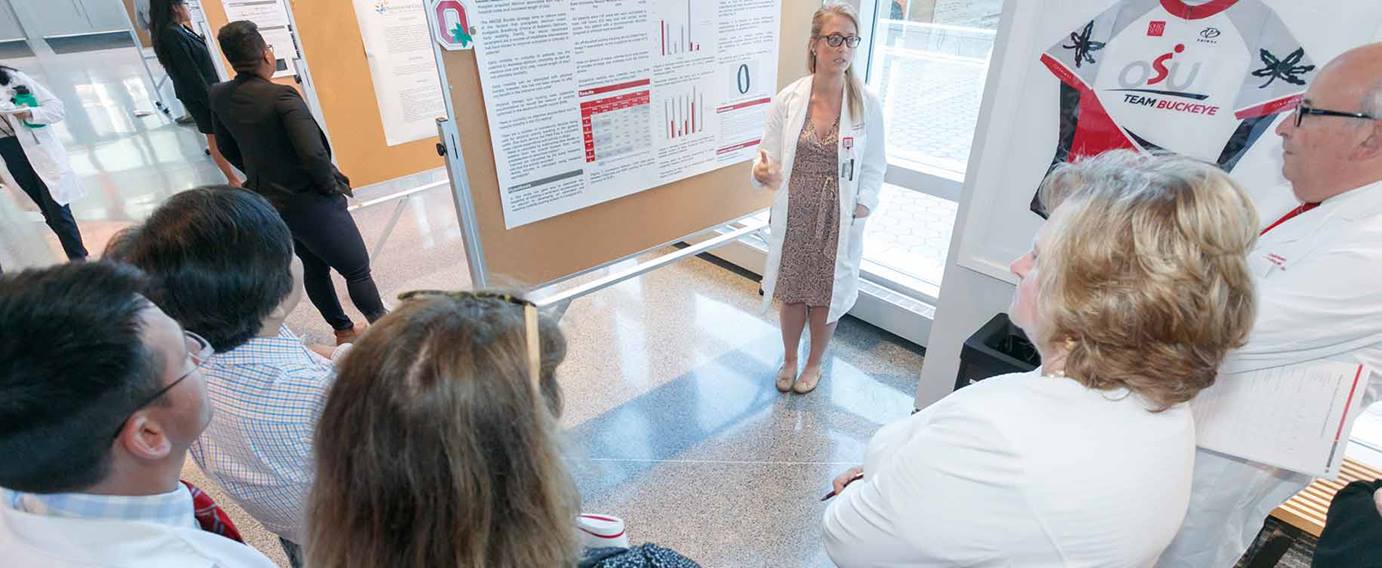
All residents have one or more years of professional development time, frequently focusing on research and the attainment of a masters or doctoral degree.
All Ohio State general surgery residents are required to spend at least one year engaged in mentored basic/translational science, clinical or education research after their second or third clinical year. Mentored research can be conducted at Ohio State or at another academic institution. During the research year(s), residents earn either a Master of Medical Science degree or another advanced degree from The Ohio State University. Hear from our residents who have completed the Research Training Program.
Some Ohio State surgery residents may be given the option to complete a one-year surgical critical care fellowship in the Department of Surgery after their third year of clinical training instead of research. This fellowship prepares the graduating resident to sit for the American Board of Surgery Certificate in Surgical Critical Care.
All second- and third-year residents must also do a clinical or basic science research project, which they present at the Department of Surgery Annual Surgical Research Conference in May. The department will pay for residents to attend professional meetings if they have an abstract accepted at any time during their residency.
Conferences, Didactics and Teaching Skills
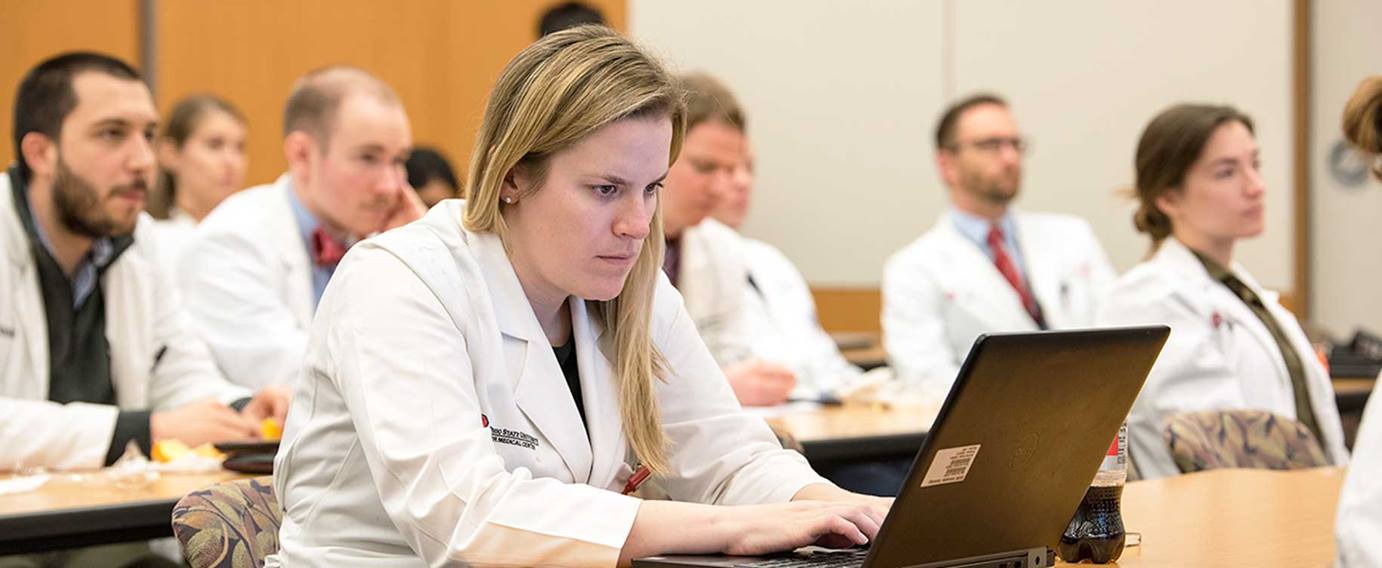
All residents attend weekly morbidity and mortality conference, grand rounds and resident- and faculty-run didactic conferences each week.
Lab and senior residents have the opportunity to participate in a variety of leadership and professional development seminars, workshops and courses during their research time.
Residents teach Ohio State medical students throughout their training, including during their professional development (lab) time. We also send multiple senior residents each year to the American College of Surgeons Residents as Teachers and Leaders course in Chicago. This has given us an excellent cadre of senior residents to teach and to teach the art of teaching to junior residents.
Evaluation
Each rotation has a faculty education liaison who coordinates mid-rotation feedback to help residents in their continuous growth. Faculty evaluate residents at the end of each rotation and their overall progress is reviewed semi-annually. Residents are also evaluated by nurses, peers and medical students using a 360-degree evaluation format. Residents are evaluated according to the ACGME Milestones on professionalism, medical knowledge, patient-care skills, technical skills, interpersonal and communication skills, practice-based learning and improvement, and systems-based practice.
All residents take the American Board of Surgery (ABS) In-Training Exam (ABSITE) each January, and the residency program provides mentorship for those who require studying assistance. levels participate in Mock Oral Exams, providing direction as they prepare for the American Board of Surgery Certifying Examination. In the 2023-24 academic year, the residency program began participating in the ABS Entrustable Professional Activities assessment system, in which app-based feedback will help residents develop throughout training and provide an overview of their progress to the ABS at the completion of residency.
